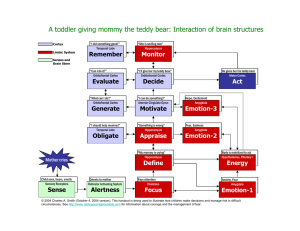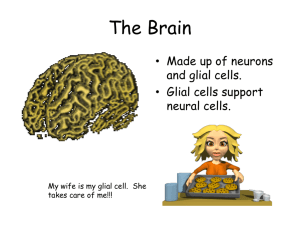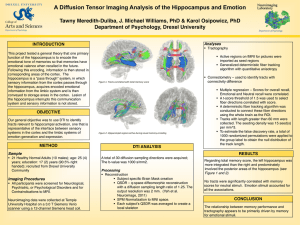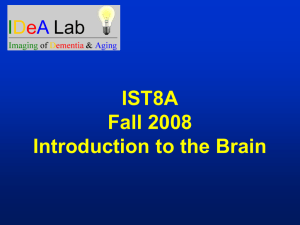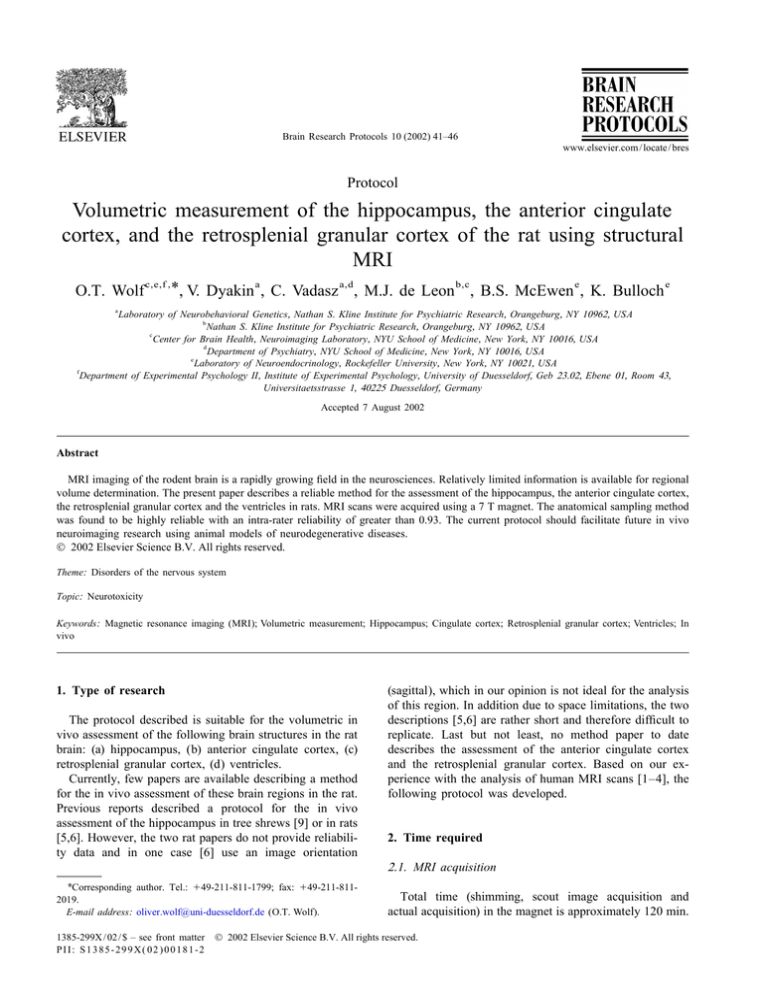
Brain Research Protocols 10 (2002) 41–46
www.elsevier.com / locate / bres
Protocol
Volumetric measurement of the hippocampus, the anterior cingulate
cortex, and the retrosplenial granular cortex of the rat using structural
MRI
O.T. Wolf c,e,f , *, V. Dyakin a , C. Vadasz a,d , M.J. de Leon b,c , B.S. McEwen e , K. Bulloch e
a
Laboratory of Neurobehavioral Genetics, Nathan S. Kline Institute for Psychiatric Research, Orangeburg, NY 10962, USA
b
Nathan S. Kline Institute for Psychiatric Research, Orangeburg, NY 10962, USA
c
Center for Brain Health, Neuroimaging Laboratory, NYU School of Medicine, New York, NY 10016, USA
d
Department of Psychiatry, NYU School of Medicine, New York, NY 10016, USA
e
Laboratory of Neuroendocrinology, Rockefeller University, New York, NY 10021, USA
f
Department of Experimental Psychology II, Institute of Experimental Psychology, University of Duesseldorf, Geb 23.02, Ebene 01, Room 43,
Universitaetsstrasse 1, 40225 Duesseldorf, Germany
Accepted 7 August 2002
Abstract
MRI imaging of the rodent brain is a rapidly growing field in the neurosciences. Relatively limited information is available for regional
volume determination. The present paper describes a reliable method for the assessment of the hippocampus, the anterior cingulate cortex,
the retrosplenial granular cortex and the ventricles in rats. MRI scans were acquired using a 7 T magnet. The anatomical sampling method
was found to be highly reliable with an intra-rater reliability of greater than 0.93. The current protocol should facilitate future in vivo
neuroimaging research using animal models of neurodegenerative diseases.
2002 Elsevier Science B.V. All rights reserved.
Theme: Disorders of the nervous system
Topic: Neurotoxicity
Keywords: Magnetic resonance imaging (MRI); Volumetric measurement; Hippocampus; Cingulate cortex; Retrosplenial granular cortex; Ventricles; In
vivo
1. Type of research
The protocol described is suitable for the volumetric in
vivo assessment of the following brain structures in the rat
brain: (a) hippocampus, (b) anterior cingulate cortex, (c)
retrosplenial granular cortex, (d) ventricles.
Currently, few papers are available describing a method
for the in vivo assessment of these brain regions in the rat.
Previous reports described a protocol for the in vivo
assessment of the hippocampus in tree shrews [9] or in rats
[5,6]. However, the two rat papers do not provide reliability data and in one case [6] use an image orientation
(sagittal), which in our opinion is not ideal for the analysis
of this region. In addition due to space limitations, the two
descriptions [5,6] are rather short and therefore difficult to
replicate. Last but not least, no method paper to date
describes the assessment of the anterior cingulate cortex
and the retrosplenial granular cortex. Based on our experience with the analysis of human MRI scans [1–4], the
following protocol was developed.
2. Time required
2.1. MRI acquisition
*Corresponding author. Tel.: 149-211-811-1799; fax: 149-211-8112019.
E-mail address: oliver.wolf@uni-duesseldorf.de (O.T. Wolf).
Total time (shimming, scout image acquisition and
actual acquisition) in the magnet is approximately 120 min.
1385-299X / 02 / $ – see front matter 2002 Elsevier Science B.V. All rights reserved.
PII: S1385-299X( 02 )00181-2
42
O.T. Wolf et al. / Brain Research Protocols 10 (2002) 41–46
Acquisition of the 28 coronal image sections used for the
volumetric analysis took about 70 min. This time can be
reduced if only a portion of the brain is imaged.
2.2. Manual volumetric analysis of the MRI images
A person familiar with basic rat neuroanatomy can be
trained to use the software and to reliably determine the
anatomic parameters used for the manual volumetric
assessment within weeks to months. For the analysis itself,
the trained rater needs between 90 and 120 min to
manually outline the described regions of interest (ROIs)
as well as the headsize (intracranial vault) measure for one
subject.
3. Materials
3.1. Animals
Seven 9-week-old adult male Sprague–Dawley rats
(weight: 351615.0 g, mean6S.E.) were selected for this
experiment. Four rats reaching stage four seizures induced
by kainic acid and three controls (placebo vehicle), as
describe elsewhere [12] were used to determine the
parameters of this method. All animals were housed in
accordance with the Animal Welfare Act [8], given free
access to food (rat chow) and water, and kept on a 12-h
light, 12-h dark cycle.
3.2. Animal preparation for the MRI scanning
Animals were first lightly anesthetized with 3% isoflurane in 75% NO 2 125% O 2 , followed by an i.p.
injection of 20 mg / kg diazepam (Elkins-Sinn, Cherry Hill,
NJ, USA). For maintenance of anesthesia during experiment, isoflurane was reduced to 1.5% with slight correction for body weight. Temperature was monitored throughout the scan using a rectal probe. Body temperature was
controlled through a warm water containing line system,
with automatic temperature monitoring. The animal’s head
was fixed in a head holder (David Kopf Instruments,
Tujunga, CA, USA), and limb movements were controlled
by wrapping the animal with a flexible textile, which
allowed breathing but prevented limb movements.
3.3. MRI system
MRI scans were obtained at the MRI facility of the
Nathan S. Kline Institute for Psychiatric Research
(Orangeburg, NY, USA). A 7.0 Tesla 40-cm horizontal
bore MR system (Magnex Scientific, Abingdon, UK),
driven by a Surrey Medical Imaging Systems (SMIS,
Guilford, UK) spectrometer was used. The system is
equipped with a rodent imaging gradient set (10 cm i.d.,
Fig. 1. Resliced sagittal image indicating the line connecting the superior
end of the olfactory bulb with the superior end of the cerebellum (white
line). A line perpendicular to this one (black line) was used to orient the
coronal image acquisition creating the images used for the volumetric
analysis (Fig. 2).
1000 mT / m, 200 ms rise time). A quadrature bird-cage
transmit / receive radio-frequency (RF) coil (Morris Instruments Inc., Canada) was employed.
3.4. MRI sequence
A moderate spin-echo sequence (TR54000 ms and TE
25 ms, four averages, 0.6 mm slice thickness with a 0.3
mm gap, slice interleave 2; bandwidth 225 kHz, RF pulse
with shape of 5 lobe sinc and BW 3 kHz) optimized for
reasonable signal-to-noise ratio and contrast in the considered brain structures was employed for acquisition of the
images. The field of view (FOV) was 32332 mm, the
matrix was 2563256 resulting in an in-plane resolution of
125 mm. First a sagittal scout image was taken to control
for proper image alignment. The 28 coronal sections used
for the volumetric analyses were taken perpendicular to a
line connecting the superior end of the olfactory bulb with
the superior end of the cerebellum (Fig. 1).
3.5. Data transfer and description of the software
The MRI scans were transferred to a Sun computer
station, where manual volumetric analysis was carried out
using an in-house developed image analysis program,
which uses Solaris as the operating system (MIDAS, Wai
Tsui, NYU unpublished data). This program allows the
user to manually outline regions of interest (ROIs) and
afterwards calculates the volumes of a specific ROI.
However the procedure described below is not restricted to
this program, but can also be executed with other image
analysis software (e.g. Analyze or NIH Image).
O.T. Wolf et al. / Brain Research Protocols 10 (2002) 41–46
4. Detailed procedure
4.1. Protocol development, general comments
Pilot experiments revealed that a coronal orientation
provided more slices of clearly visualized hippocampus
and cingulate cortex than did either the axial or the sagittal
orientation and thus images were collected in coronal
orientation for the volumetric analysis.
As a first step, visible anatomical landmarks were
identified using the Paxinos and Watson rat brain atlas
[10]. Next, preliminary outlines of the ROIs of interest
were marked and a stepwise procedure was established
(see below). All measurements were performed from
rostral to caudal. For the hippocampus, a conservative
measurement approach was taken i.e. slices where the
structure was not readily and reliably identifiable were not
used for the analysis. In case of the hippocampus, the slice
prior to that used for the start of the measurements
consisted of a small piece of fornix and CA3 (Fig. 2, slice
3). Similarly the one slice after the last slice used for the
measurements still contained a small part of the subiculum
(Fig. 2, slice 6).
Drawings were made using a twofold magnification of
the images. To check the correctness of each drawing, the
ROIs were thereafter also viewed without magnification, in
order to allow a better global overview.
4.2. Description of the outlined regions
The cingulate cortex (areas 1 and 2; [10]) was outlined
by starting at the intersection of the corpus callosum with
the midline and following the corpus callosum and cingulum to its most dorsolateral point. This point was then
connected with a line to the most dorsal and medial
intra-hemispheric point of the cortex (Fig. 2, slices 2 and
3). Using this landmark-based method, the cingulate cortex
was measured on four slices starting rostrally at the closure
of the genu of the corpus callosum (approx. 1.6 mm from
Bregma) and terminating caudally at the rostral limit of the
hippocampus (approx. 21.4 mm from Bregma). This
measure rostrally excludes a certain amount of cingulate
(area 1; see Ref. [10] and Fig. 2 slice 1), however, in order
to assure high reliability, it was decided to only measure
the slab mentioned above (see Fig. 2, slices 2 and 3 for an
example of the cingulate cortex ROI).
The retrosplenial granular cortex (rsg; area b, sometimes also called posterior cingulate cortex) is the caudal
continuation of the cingulate and was measured in a
similar fashion as the cingulate gyrus. The retrosplenial
granular cortex was measured on four consecutive slices
starting rostrally at the rostral limit of the hippocampus
(approx 22.12 mm from Bregma, see above). The caudal
termination was defined as the slice prior to the opening of
the corpus callosum, which is approx 25.3 mm from
43
Bregma [10] (see Fig. 2, slices 4 and 5 for an example of
the retrosplenial granular cortex ROI).
The hippocampus (cornu Ammonis, CA) and dentate
gyrus (DG) were manually outlined on coronal slices from
rostral to caudal. The starting rostral slice was defined by
the CA and DG and coincided with the dorsal hippocampal
commissure approximately 22.12 mm from Bregma [10].
Even though fimbria and possibly a small piece of CA3
were visible on an earlier slice (Fig. 2, slice 3), the reliable
measurement of this portion of hippocampus was extremely difficult. Therefore, it was decided to only include those
slices where the hippocampus was clearly visible (Fig. 2,
slice 4).
Multiple features defined the caudal boundary: the loss
of contrast between the external capsule and the
subiculum, the absent DG and the clear separation of the
two cerebral hemispheres. Moreover, the aqueduct opened
up and became a clearly visible, large, round circle. The
last hippocampal slice corresponds to ca. 26.8 mm from
Bregma, whereas, the first non-hippocampal slice corresponds to ca. 27.8 mm from Bregma (Fig. 2, slice 6).
Some subiculum is still apparent at this level, but was
intentionally not included in the analysis.
In all animals the hippocampus was measured on six
consecutive slices. In addition, the hippocampus was
divided into its dorsal and ventral portion. The dorsal part
ranged from ca. 22.12 mm from Bregma to 23.8 mm
from Bregma, which corresponds to three slices on the
MRI, while the ventral part ranged from ca. 24.5 mm
from Bregma to ca. 26.8 mm from Bregma, which
corresponds to three slices on the MRI (see Fig. 2 for
examples of ROIs for the dorsal (slice 4) and ventral (slice
5) hippocampus).
4.2.1. Ventricular CSF volume
Using a threshold function with additional manual
editing, the ventricular CSF volume (lateral ventricle, third
ventricle, and aqueduct) was determined for each slice,
which was used for volumetric analysis (10 slices).
4.2.2. Intracranial vault
In order to control for possible inter-individual differences in global brain volume, the entire brain was outlined
on all the 10 slices, which were used for cingulate or
hippocampal measurements [3].
4.3. Statistical analysis
4.3.1. MRI volumetric reliability
In order to assess intra-rater reliability, the same rater
(OTW) outlined the ROIs of the seven animals again after
a period of 1 week. Reliability was measured at the level
of the total volume (n57) and at the level of the slice
(n521–70 depending on the number of slices measured for
the specific region) using the intraclass correlation coefficient (r icc ) [11].
44
O.T. Wolf et al. / Brain Research Protocols 10 (2002) 41–46
Fig. 2. Series of coronal MRI sections (from rostral to caudal) showing examples of the ROI drawings for the anterior cingulate cortex (cing), the
retrosplenial granular cortex (rsg), the dorsal hippocampus (dhc), and the ventral hippocampus (vhc). For ease of presentation, the drawings are shown as
dots in order to allow a view of the underlying anatomy. For the actual analysis, these dots are joined in order to create an outline of the region. (1) Approx
1.7 mm from Bregma, last slice (coming from caudally) before the anterior cingulate cortex is outlined; (2) Approx. 20.3 mm from Bregma, closure of the
genu of the corpus callosum, anterior cingulate cortex measurements have started; (3) Approx. 21.8 mm from Bregma, the fimbria and first small parts of
the dentate gyrus and CA3 are already visible, however they are not included in the hippocampus measurement, in order to improve the reliability. At this
level, the LV is still superior to the fimbria; (4) Approx. 23.3 mm from Bregma mm, level of the dorsal hippocampus. Anterior cingulate cortex is now
replaced by retrosplenial granular cortex; (5) Approx. 25.3 mm from Bregma, level of the ventral hippocampus, still containing retrosplenial granular
cortex; (6) Approx. 27.8 mm from Bregma, opening of the two hemispheres. Some remains of the subiculum are visible, but are not included in the
hippocampus measurements. Note the large aqueduct. Additional anatomical landmarks are indicated (cc, corpus callosum; gcc, genu of the corpus
callosum; ec, external capsule; fmi, forceps minor corpus callosum; LV, lateral ventricle; D3V, dorsal third ventricle; Aq, aqueduct; rf, rhinal fissure).
O.T. Wolf et al. / Brain Research Protocols 10 (2002) 41–46
Table 1
Intra-rater reliability as assessed with the intraclass correlation coefficients for the MRI-derived volumes
Hippocampus
Dorsal hippocampus
Ventral hippocampus
Cingulate cortex
Retrosplenial granular cortex
Ventricular volume
Total brain volume
r icc whole volume
r icc individual slice
0.99
0.99
0.98
0.99
0.98
0.96
0.99
0.99
0.99
0.99
0.99
0.97
0.94
0.99
(n57)
(n57)
(n57)
(n57)
(n57)
(n57)
(n57)
(n542)
(n521)
(n521)
(n528)
(n528)
(n570)
(n570)
45
Table 2
MRI-derived brain structure volumes (right and left side combined)
obtained from three 9-week-old male Sprague–Dawley rats
Volume (mm 3 )
Hippocampus
Dorsal hippocampus
Ventral hippocampus
Cingulate cortex
Retrosplenial granular cortex
Ventricular volume
Total brain volume
(for the measured slab)
96.33 (91–99)
28.67 (24–32)
67.67 (66–70)
16.00 (15–17)
8.67 (7–10)
4.00 (3–5)
1064.67 (1038–1097)
Values are means with range in parentheses.
5. Results
High intra-rater reliability (r icc .0.93) was obtained for
the MRI-derived volumetric assessment of the regions
(Table 1). The volumes (mean and range) for the brain
regions assessed with the developed protocol are presented
in Table 2. Data are presented for the three placebo-treated
animals only.
6. Discussion
The present report described a volumetric method for
the measurement of the rat hippocampus, two cortical
brain structures (anterior cingulate cortex and retrosplenial
granular cortex) and total ventricular volume. We imaged
the rat brain with a high field strength (7 T) magnet and a
sequence which resulted in a scan with sufficient anatomical contrast to determine regional brain volumes.
However, this volumetric protocol can also be used for
images acquired with lower magnetic field strength, given
that they provide sufficient anatomical detail, to reveal the
anatomical landmarks needed for the analysis. Groups
working with other field strength magnets should first
develop a sequence suitable for their scanner. There are
multiple publications describing sequences leading to high
quality images suitable for the volumetric work described
in the current protocol (e.g. Refs. [5,6,9]).
This protocol can easily be adapted to images with
thicker or thinner slices, since the protocol describes
multiple anatomical landmarks which can readily be
identified on MRI images of small rodents. Indeed thinner
slices as used in the current experiment would be preferable, since thereby the anterior cingulate cortex and the
retrosplenial granular cortex could be assessed on more
than four slices. In addition, a 3D data set (without gaps)
instead of the 2D multislice data set used in this paper
would allow the use of 3D image analysis software and the
parallel use of multiple image views (e.g. sagittal and
coronal). The use of multiple image orientation for the
determination of anatomical boundaries has proven to be
extremely useful in our human volumetric work [3,4].
Finally, we used only one sequence and one resulting
image for the analysis of regional brain structures as well
as the CSF determination. Obviously the brain–CSF
differentiation would be easier on images with a longer
TE.
The current report focuses on rat brain images, but the
same volumetric method can also be used for the assessment of the mouse brain since the same anatomical
landmarks are readily detectable in the mouse [6].
Potential problems during the image acquisition are
movement artefacts during the relatively long image
acquisition. Therefore it is important to maintain deep
anesthesia during the entire scanning time. The ideal dose
of the anesthetics used has to be fine-tuned depending on
age, sex and strain of the rats used. Alternatively, if no
follow-up images or behavioral assessments are planned,
the animals could be paralyzed and mechanically ventilated. If the coronal image despite the scout acquisition is
not well aligned (e.g. right side more dorsal than the left
side), than the anatomical decisions should be made
separately for each hemisphere. In case of a 3D data set,
the image could also be aligned and resliced correctly after
the original acquisition [3,4].
The measurement of limbic and cortical regions allows
the determination of the anatomic specificity of observed
effects. For example, using this protocol, we could demonstrate in vivo a selective volume reduction of the hippocampus following kainic acid administration [12]. The
measurement of the intracranial vault allows to ascertain
that the observed regional volume differences are not
caused by baseline differences in brain size and / or global
effects on brain volume. If differences in total intracranial
vault are observed between experimental groups, the
intracranial vault should be used as a covariate [7]. The
current protocol should stimulate the use of structural MRI
for the in vivo investigation of rodent models of neurodegenerative diseases. Moreover, since similar protocols are
available for the human brain [2,4], this protocol might
facilitate the parallel MRI investigation of animal models
and clinical patients.
46
O.T. Wolf et al. / Brain Research Protocols 10 (2002) 41–46
7. Quick procedure
(A)
(B)
(C)
(D)
Animal preparation for the scanner.
Shimming, sagittal scout, coronal acquisition.
Data transfer to the image analysis computer.
First overview of the scan, identification of the
landmarks.
(E) Determination of the first and last slice used for each
region of interest.
(F) Manual outline of the ROIs.
(G) Volume computation and statistical analysis (possibly
correcting for differences in total brain volume).
Acknowledgements
Supported by grants from the NIH [MH 41256,
MH42834 (BSM, KB)], NIH, NIA [AG 08051, AG
12101(MdL)]; the Dreyfuss Health Foundation, NY and
NIH AA11031 (CV), the Deutsche Forschungs
Gesellschaft (WO-733 / 2-2; OTW).
References
[1] M. Bobinski, M.J. de Leon, J. Wegiel, S. Desanti, A. Convit, L.A.
Saint Louis, H. Rusinek, H.M. Wisniewski, The histological validation of post mortem magnetic resonance imaging-determined hippocampal volume in Alzheimer’s disease, Neuroscience 95 (2000)
721–725.
[2] A. Convit, M.J. de Leon, C. Tarshish, S. De Santi, W. Tsui, H.
Rusinek, A. George, Specific hippocampal volume reductions in
individuals at risk for Alzheimer’s disease, Neurobiol. Aging 18
(1997) 131–138.
[3] A. Convit, P. McHugh, O.T. Wolf, M.J. de Leon, M. Bobinski, S. De
Santi, A. Roche, W. Tsui, MRI volume of the amygdala: a reliable
method allowing separation from the hippocampal formation, Psychiatry Res. Neuroimaging 90 (1999) 113–123.
[4] A. Convit, O.T. Wolf, M.J. de Leon, M. Patalinjug, E. Kandil, C.
Caraos, A. Scherer, L.A. Saint Louis, R. Cancro, Volumetric analysis
of the pre-frontal regions: findings in aging and schizophrenia,
Psychiatry Res. Neuroimaging 107 (2001) 61–73.
[5] B. Hauss-Wegrzyniak, J.P. Galons, G.L. Wenk, Quantitative volumetric analyses of brain magnetic resonance imaging from rat with
chronic neuroinflammation, Exp. Neurol. 165 (2000) 347–354.
[6] R.F. Kooy, E. Reyniers, M. Verhoye, J. Sijbers, C.E. Bakker, B.A.
Oostra, P.J. Willems, A. Van Der Linden, Neuroanatomy of the
fragile X knockout mouse brain studied using in vivo high resolution magnetic resonance imaging, Eur. J. Hum. Genet. 7 (1999)
526–532.
[7] D.H. Mathalon, E.V. Sullivan, J.M. Rawles, A. Pfefferbaum, Correction for head size in brain-imaging measurements, Psychiatry Res.
50 (1993) 121–139.
[8] NIH, Guide for the Care and Use of Laboratory Animals, 1985.
[9] F. Ohl, T. Michaelis, H. Fujimori, J. Frahm, S. Rensing, E. Fuchs,
Volumetric MRI measurements of the tree shrew hippocampus, J.
Neurosci. Methods 88 (1999) 189–193.
[10] G. Paxinos, C. Watson, The Rat Brain in Stereotaxic Coordinates,
2nd Edition, Academic Press, San Diego, CA, 1986.
[11] P.E. Shrout, J.L. Fleiss, Intraclass correlations: Uses in assessing
rater reliability, Psychol. Bull. 86 (1979) 420–428.
[12] O.T. Wolf, V. Dyakin, A. Patel, C. Vadasz, M.J. de Leon, B.S.
McEwen, K. Bulloch, Volumetric structural magnetic resonance
imaging (MRI) of the rat hippocampus following kainic acid (KA)
treatment, Brain Res. 934 (2002) 87–96.




